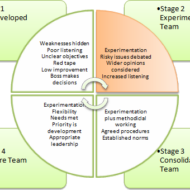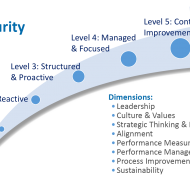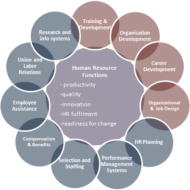Posted by Managementguru in Business Management, Human Resource, Organisational behaviour, Training & Development
on Mar 30th, 2014 | 0 comments

Ideal Team Development How to effect ideal team development? As the saying goes, there is no ‘I’ in TEAM WORK. Every organization should understand the importance and highlight the need for TEAM DEVELOPMENT amongst their employees. In a small group there are chances for the ‘WE’ feeling to predominate for obvious reasons. In case of larger groups as seen in big corporate, individual interaction becomes complex and gives rise to conflicts which hold back the progress. The “I” Factor: Even philosophers don’t support or advocate the “I” FACTOR in individuals. It is purely a result of SUPER EGO as Sigmund Freud has put it rightly. Man is a MYRIAD OF EMOTIONS and his mind always picks up wrong cues and signals perfectly. So, TRAINING plays a major part in tuning the individual’s mind or shall I say, SYNCHRONISING his understanding with that of the organisation’s. Try to clearly explain during the induction as to: What is the ultimate goal of your organization in terms of productivity? What is expected of each individual in his own capacity? What is the culture of the organization? What is the leader of the organization like? How do you interact with your team mates? Code of conduct and disciplinary procedures What is his role regarding the team’s development? Picture Courtesy: Popyourcareer.com Self Awareness: Self awareness is the key factor for the growth of any individual.A mind that is PHILOSOPHICALLY BENT would prove prosperity to the team as well as the organization. Western countries have realized the importance of keeping the mind cool which can be well achieved through MEDITATION AND YOGA. Sensitivity training is of paramount importance to any organization as an intervention for achieving the overall goals of the organization. Inter Personal Human Behavior: Effective human interactions are the backbone of efficient organizations and this is not possible unless the interpersonal human behavior is CONTROLLABLE AND OPEN TO DISCUSSION. There should always be SCOPE for improvement and SPACE to express one’s feelings and offer ideas, i.e., sense of participation must be groomed. Team leaders and Managers are to be suitably trained to steer their ship and also rewards are welcome to motivate the crew. Why don’t leaders experiment with new behavior of effective leadership casting away conservative methods and also design flexible norms? It will constitute for a well behaved group and paves way for your organization to be UNIQUE. While organizing a group, a manager should carry out the process with a humane perspective taking into account, the human values, vision, creative thinking and better means of motivation. These factors align and bind the organization together paving way for holistic thinking and collaborative...

Posted by Managementguru in Business Management, Economics, International Business, Principles of Management, Technology
on Mar 26th, 2014 | 0 comments

Transfer of Technology- Commercialisation Vs.Benefit The total influx of technology in underdeveloped countries is from the advanced capitalist countries for obvious reasons, which will be the highlight of this discussion. Multinational corporations play a vital part in technology transfer, the motive being profit maximization for the parent company through their subsidiaries. These corporations act as the principal instrument of technology transfer, either through their subsidiaries or through contractual agreements made with developing countries. The idea is to bring mechanized processes and equipments that are not locally available. Dominance of Technology Supplier: The technology supplier usually takes the upper hand owing to his monopolistic strength that arises from the patent protection for differentiated products and processes. Very often, the terms and conditions of transfer are arbitrarily settled under highly imperfect market conditions by the technology supplying multinationals. Advanced nations have the advantages of reduced population density, even distribution of national wealth, high standard of living, more infusion of capital into research and development, availability of skilled personnel inclined towards research etc. Dependency of Developing Nations: Developing nations on the other hand are subject to the pressures of high population density, uneven distribution of economic wealth (poor people become more poor and the rich even richer), moderate or low living standards etc. Capital drain occurs due to heavy borrowings from the World Bank which leads to increase in the social overheads. In such a situation, it is next to impossible for a developing nation to pump capital into activities concerning research. Bargaining Power of Developing Nations: The bargaining power of developing nations is weak, as they have no access to information about alternate technologies and their sources nor the necessary infrastructure to evaluate the appropriateness of equipments, intermediates and processes. Moreover, the large part of the influx of technology in developing countries is in response to the policy of industrialization through import substitution. Transfer of technology from the developed to the underdeveloped countries is made in a number of ways. They are classified into two broad categories, viz., direct mechanism and indirect mechanism. The direct mechanism includes transfer of technology through banks, journals, industrial fairs, technical co-operation, movement of skilled people etc. Here there is a choice for the developing nation to select the appropriate technology that best suits their requirement. However, this is not the principal form of technology transfer that advanced nations would prefer. Price of Technology: The indirect mechanism implies technology transfer in a “package” or a “bundle” containing technology-embodying equipments, industrial properties like patents and trademark, skill, equity capital, etc. In this system, a local enterprise negotiates with multinational corporations for transport of the required elements of technology, and the terms and conditions are settled through a process of commercial transaction. Since the trading partners are unequal, the terms of contract are invariably restrictive and the price extended for the technology unreasonably high. All the underdeveloped countries, which have opted for growth along the classical path of capitalist development, are in a position to invite multinational corporations, if for no other reason than at least for the diffusion of...

Posted by Managementguru in Business Management, Decision Making, Organisational behaviour, Principles of Management, Strategy
on Mar 24th, 2014 | 0 comments

STRATEGIC PLANNING Strategic planning is the primary step in the process of strategic management [Strategic management is a comprehensive topic that covers almost all the functional aspects of the organization] which can be outlined from at least two perspectives: First, strategy is the “broad programme for defining and achieving the objectives of an organization and implementing its mission”. Secondly, “It is the pattern of the organization’s response to the external environment over a period of time”. A strategy that takes a broad and typically long range focus is called strategic planning. MBA Application Strategies for Top Business Schools Strategic planning is the process that classifies the long range goals of the organization and opts for the precise means (strategies and polices) for achieving these goals, allocates resources, and develops long range plans to reach the destination. Watch this Video to Understand the Overview of Strategic Planning Process Time-Horizon: Strategic planning takes into account the extended time horizon. There may not be any immediate impact out of strategic planning, but the consequences in the long-run prove to be gradual and significant as well. It provides with the necessary action plans to make a difference in vital areas concerning development. You can always associate innovativeness with strategy since it explores new paradigms and tries to enhance the impact. When the size of organizations expands, they are broken down into strategic business units (SBU’S) for the purpose of functional excellence. These units are expected to operate as if they were relatively independent businesses. WHY STRATEGIC LEADERSHIP IS IMPORTANT A Tailor Made Approach: A tailor made approach is essential when it comes to strategy development the systematic analysis of the factors associated with customers and competitors (the external environment) helps the organization to meet the challenges of modern society. More and more organizations are focusing on formal approaches and concepts for planning their long range process. Specifically these challenges are a result of increasing rate of change, the complexity of manager’s jobs, the increasing importance of fitting the organization into external environment, and the increasing lag between the preparation of plans and their implementation in future. Resource Allocation: Strategic planning is an organization’s process of defining its strategy or course, and making decisions on resource allocations to pursue this strategy. Managers must be adequately geared up for strategic planning. The goals of the organization must be made plain and not unclear. Each business unit should be categorized based on its performance level to decide on the resource share to be allocated. You need to infuse cash flow into ineffectual units and divest funds from dying units into other profitable ones. The ultimate aim is to build up star performers that will be the perennial source of income or revenue generation. There should be a strong linkage between planning and control. The assessment of strategic plans of the business units must be made periodically and effectively. TOP FIVE REASONS WHY STRATEGIC PLANS FAIL SWOT Analysis: SWOT analysis is a strategic planning technique used to evaluate the Strengths, Weaknesses/Limitations, Opportunities, and Threats. Planning is the primary step for control as it provides several standards and benchmarks of control. Planning extracts commitment. Some times planning highlights the objectives only and the planning premises may not be fully reliable. Threats are to be considered as challenges and must be converted into opportunities. Two heads are better than one is the philosophy of brain storming where a group of people with knowledge and expertise assemble to lay out clear plans that will steer the organization smoothly even in times of rough...

Posted by Managementguru in Business Management, Human Resource, Organisational behaviour, Principles of Management
on Mar 17th, 2014 | 0 comments

Personnel or Human Resource Management: is the strategic approach to the management of an organization’s most valued assets – the people. Human resource is always in great demand as competent or skilled labor is in short supply. It is important to remember that no one is born with the value of excellence, as the acquisition is gradual in nature and only possible through proper training and one’s own cognitive perception. It is not that people have to belong to the elite group to make their mark in the respective fields. The best leaders and managers often are ordinary people creating amazing results and astounding success. Try some of these golden etiquettes for achieving excellence in the management of human resource: Clear objectives have to be set with the consensus of the employees Recognize the progress Confront problems Manage with flexibility Understand the value of quality Manage time for better results Enhance decision-making skills by delegating authority Master stress Motivate people Think like a winner Pursue a participative style of leadership To achieve the goals of the organization, the HR department will have to reorient itself on the following lines. It is very important that ‘Right people are chosen for the Right job’. During the induction stage, employee attitudes must be shaped in harmony with the culture of the organization. Dynamic training system should be introduced which is supposed to be a continuous process rather than a sporadic exercise. Quality of Work Life: Organization should ensure satisfactory quality of work life in order to minimize the sense of alienation, found in the workplace. It should contribute to an atmosphere to improve self-discipline, self-motivation and self realization for the purpose of production optimization in terms of both quantity and quality. The presence of a fair performance appraisal system will facilitate the growth prospects of employees in terms of career advancement and development. Fair Compensation: Institutions must work out a fair compensation package for all categories of workmen so that they may be able to receive the living wages instead of subsistence-level wages. The accent should be on production and productivity, without any compromise. Opportunities are aplenty, particularly for experienced personnel as the industries offer wide job prospects for the prospective candidates. Now-a-days job hopping is rampant which is a serious issue to be managed. A number of organizations offer bonus in the form of stock that interjects a feeling of oneness, which ensures alignment of interest between employees and the management. Favored position in terms of enhanced performance from the work force is possible only if the management comes down to embrace and lend their ears to certain rational demands form the other end. Security of Employment Increased wages Employee ownership Participation and employment Internal promotions Information sharing Incentives etc., The personnel function can 1) Attract attention to indicate the importance attached to management’s process and the various policies, practices and systems that support the process. 2) Provide necessary information and expertise on best practices in rival companies to benchmark the process and provide with analytical support for diagnosing and recounting solutions to problems arising in the employee management relation. 3) Engage in business decisions and accelerate change that is consistent with the underlying values of the company. Note: The laws and matters relating to wages and bonus come under the purview of the Ministry of Labor and Employment. The Minimum Wages Bill was passed by the Indian Dominion Legislature and came into force on 15th March,...

Posted by Managementguru in Business Management, Human Resource, Motivation, Organisational behaviour, Principles of Management
on Mar 10th, 2014 | 0 comments

Employee Morale – Role and Effect What is Morale? Morale is a word that conveys different meaning to different people. It might imply the following meanings: 1. Mental Attitude or Mind set from a psychologist’s perspective 2. A feeling of togetherness from an individual’s point of view 3. Group consent in terms of a business environment etc. Morale can be defined as ” an attitude of mind which conditions how well or how badly duties are performed”- W.H.Walley It can also be defined as ” the collective attitudes of workers towards one another, the employer, the management, or their work”-J.C.Denyen Morale is ” the capacity of group of people to pull together persistently and consistently in pursuit of a common purpose”-Dr.Deighton Morale is thus the undercurrent in an organisation that determines the performance levels of the employees as it dictates employees’ enthusiasm, voluntary conformance with regulations and orders and willingness to co-operate with fellow workers to accomplish the enterprise objectives. Poor morale is evident from in-subordination, discouragement and dislike of job, company and associates. Nature of Morale What it is? : Emotional by nature , a state of well- being and an attitude of mind. What it does? : Directly related to quality of work, enthusiasm, motivation, productivity, discipline, co-operation and initiative. Where it resides? : In the minds, attitudes and emotions of employees as individuals and as groups. Whom it affects? : Employees and executives during their interaction and ultimately the customers and the community. What it affects?: Willingness to work and placing the enterprise objective behind self interest. To summarise, the ill effects of Bad Morale would be Reduced productivityIncreased absenteeismAntagonism towards managementToo much of complaints and grievancesIncreased employee turn-overFriction between employeesAlcoholismAccidentsIncreased lethargy In contrary High Morale leads to Willing co-operation towards enterprise objectivesLoyalty to the managementGood behaviour in conformance with the rules and regulationsStrong and coherent groups leading to organisational staminaPrioritising jobs and placing self interest behind organisational objectivesIncreased sense of participationPride in organisation Picture Courtesy: extramadness.com Ways to Improve Employee Morale From the workers’ point of view: Fair compensation and bonusSatisfactory working conditions conforming to safety and securityTreated with dignityEfficient and amiable leadershipScope for expressing their views for improvementAcceptable working hoursEnsuring economic security From the management’s view point Co-operation from the employeesStability of tenureIncreased productivityLow cost per unitLoyalty of the workers Is it possible to measure Employee Morale? Level of productivity: When the morale is low due to different reasons, higher is the chance of absenteeism, accidents and grievances since the employees try to overlook their responsibilities towards the organisation. Therefore it is the responsibility of the management to settle and score issues relating to employees or unions then and there to avoid those issues blowing out of proportion. Morale Surveys These are generally conducted by individual organisations to find out if the employees are satisfied with their job and task and how they feel about it. This is considered to be a fairly important measure to gauge the kind of relationship the employees have with the management. Surveys also indicate whether the channel of communication is open between the superiors and sub-ordinates and serves as an emotional release for the workers to express their real feelings. Types of Morale Surveys: Objective Surveys: Objective type of questions are given to the employees for answering but the flaw is that, the management representative writes the answers and this does not give a chance for the workers to express their feelings. Descriptive Surveys: Here the employees write their answers to queries asked which are more descriptive in nature and reflects the actual feelings of each individual. Projective Surveys: Sometimes psychological tests are conducted to bring out the hidden feelings from tight lipped employees or who fear the management. The management must be aware of the following morale...










